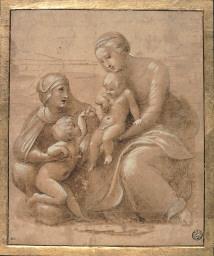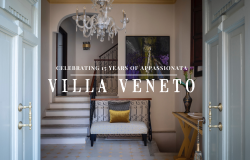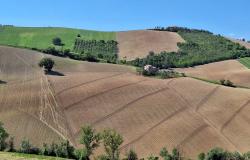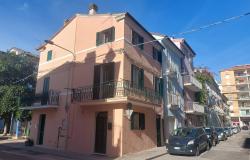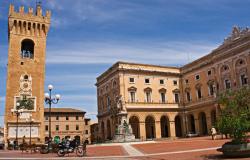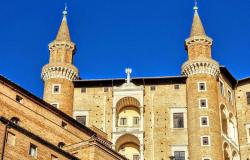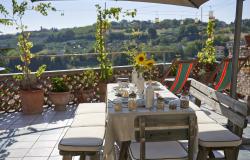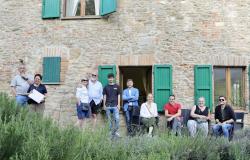Raphael returns to his eastern Italian Marche region hometown Urbino on Saturday in a show highlighting the influence of his father Giovanni Sanzio's workshop and that of Sanzio's friend Perugino.
In all there will be 20 paintings and 19 sketches from as far afield as Brazil and Spain showing Rapahel's progress from youthful prodigy to one of the greatest masters of the Renaissance.
Marche Art Superintendent Lorenza Mochi Onori said the show, which was four years in the making, set out to underscore the importance of Urbino, a cultural beacon in Raphael's time, in the artist's development.
She said Raphael remained attached to his native city, contrary to the account of Italy's first art historian, Renaissance painter Giorgio Vasari.
Raphael Sanzio was born in Urbino in 1483, completed his training by age 17 and had already created a series of important artworks for his hometown by the time he left four years later.
Entitled Raphael And Urbino, the exhibition explicitly sets out to explore the two-way exchange between the youthful artist and his hometown, looking at how each influenced the other.
''This show will explain Raphael in the context of Urbino, not just as his birthplace but as a town that played a vital role in his training,'' said Mochi Onori.
''Urbino remained an essential point of reference for the artist throughout his life, which can be seen in the fact he always signed his works 'Raphael Urbinas'''.
The 39 paintings and drawings will include 'The Resurrection of Christ', on loan from the Sao Paulo Museum in Brazil, 'The Holy Family with a Lamb' from the Prado in Madrid, and a section of an altarpiece showing the bust of an angel, from Brescia.
In addition, the exhibit will also feature 32 paintings and 10 drawings by artists close to Raphael.
Raphael died in Rome in 1520 on his 37th birthday.
Despite his short life, he rose to become one of the most acclaimed painters of his time.
He was taught by his father Giovanni Sanzio or Santi - a painter whom 16th century art critic and painter Giorgio Vasari dismissed as possessing zero talent - and inspired, most biographies say, by Leonardo da Vinci and Michelangelo.
The work on display includes pieces by his father, who was court painter to the duke of Urbino and owned a busy workshop.
The third section features a collection of locally produced Renaissance ceramics bearing images by Raphael. Of particular interest here is a rare ceramic created using an original design by Raphael rather than an engraving.
Raphael's vocation for art was apparent at an early age, and he is thought to have played an important role in his father's workshop.
His duties probably increased after his father's death in 1494, although he later trained under Umbrian master Pietro Perugino.
Raphael was considered fully trained by 1501 and his first documented commission was an altarpiece for a church in Citta' di Castello, a town halfway between Perugia and Urbino.
Over the next few years, he painted a series of works for churches in Urbino, many of which still survive.
In 1504, he moved to Florence for four years before spending the final 12 years of his life in Rome, where Pope Julius II commissioned him to decorate four rooms in the papal apartment, now known as the Raphael Rooms.
The exhibition, entitled 'Raffaello e Urbino', is on show in the Palazzo Ducale in Urbino from April 4 until July 12.
